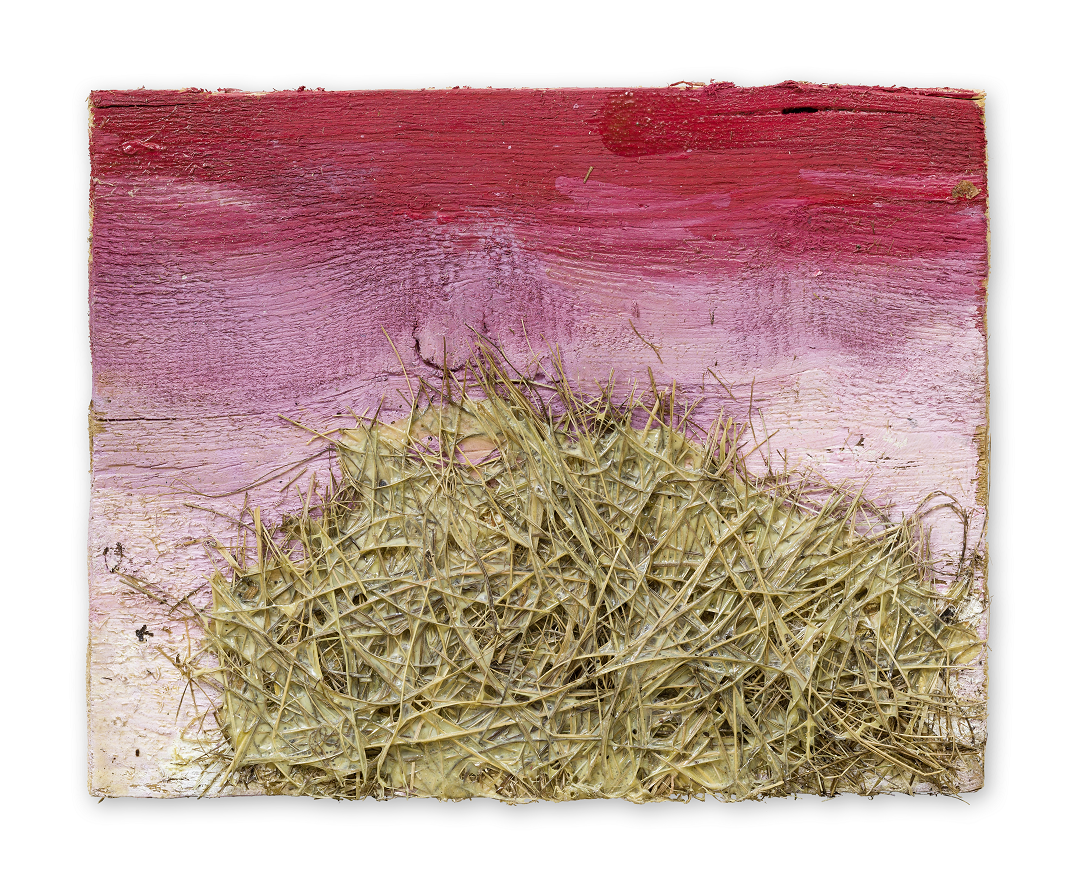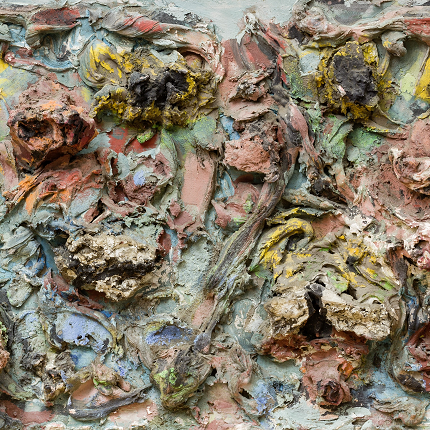The Art of Nature
Music and botany
The Nature of Art
Music and cybernetics
Close-up of a Leaf
As a composer and avid observer of nature, Cerha is fascinated by plant structures—whether, as here, the veined cells of a leaf, the mycelia of mushrooms, or the branches of large trees.
Bildquelle: Pixabay

Friedrich Cerha, Untitled, 2014,
mixed media on wood,
22.2 x 25.7 cm
Zugang
As far as the structure of my music is concerned, my observations of organic growth have increasingly guided my interest towards the relationships between fundamental structures and the immediately recognizable results that come to light through processes of development and unfurling: The fact that plants with similar basic structures look very different when subject to different environmental conditions and, conversely, differently structured plants can develop very similar shapes when in similar conditions, is just one of the important experiences that furthered my creative thinking.
Friedrich Cerha
Schriften: ein Netzwerk, Vienna 2001, p. 80
Cerha’s profound interest in nature is one of the cornerstones of his thinking. His connection to nature is expressed even in his choice of family home: Friedrich and Gertraud Cerha live in Maria Langegg, a small village in Lower Austria, in the midst of the picturesque Dunkelsteiner Forest landscape. Cerha even hand-crafted a sandstone chapel in his garden there.
No wonder, then, that traces of nature can often be discovered in his music, particularly ones related to the world of plants. He repeatedly expresses his interest in the “regularity of floral” bifurcations such as branching, the “realm of the natural”, and the “problems of organic growth”. The roots of Cerha’s fascination can be found in his role models, Anton von Webern in particular, who legitimized his compositional concept with the help of Goethe’s Urpflanze theory on the metamorphosis of plants.
References to nature in Cerha’s work are manifold. They range from mimetic aspects—the trunk, branch, and twig structures in Monumentum—to aesthetic issues of slow growth in Exercises, all the way to the literary themes of Baal that revolve around nature as a mythical place.
Werke zum Themenfeld
„Weißt du, dass die Bäume reden?"
Monumentum, 1988
Musik als Wachstum
Exercises, 1962—67
Von der mystischen Natur
Baal, 1974—80



